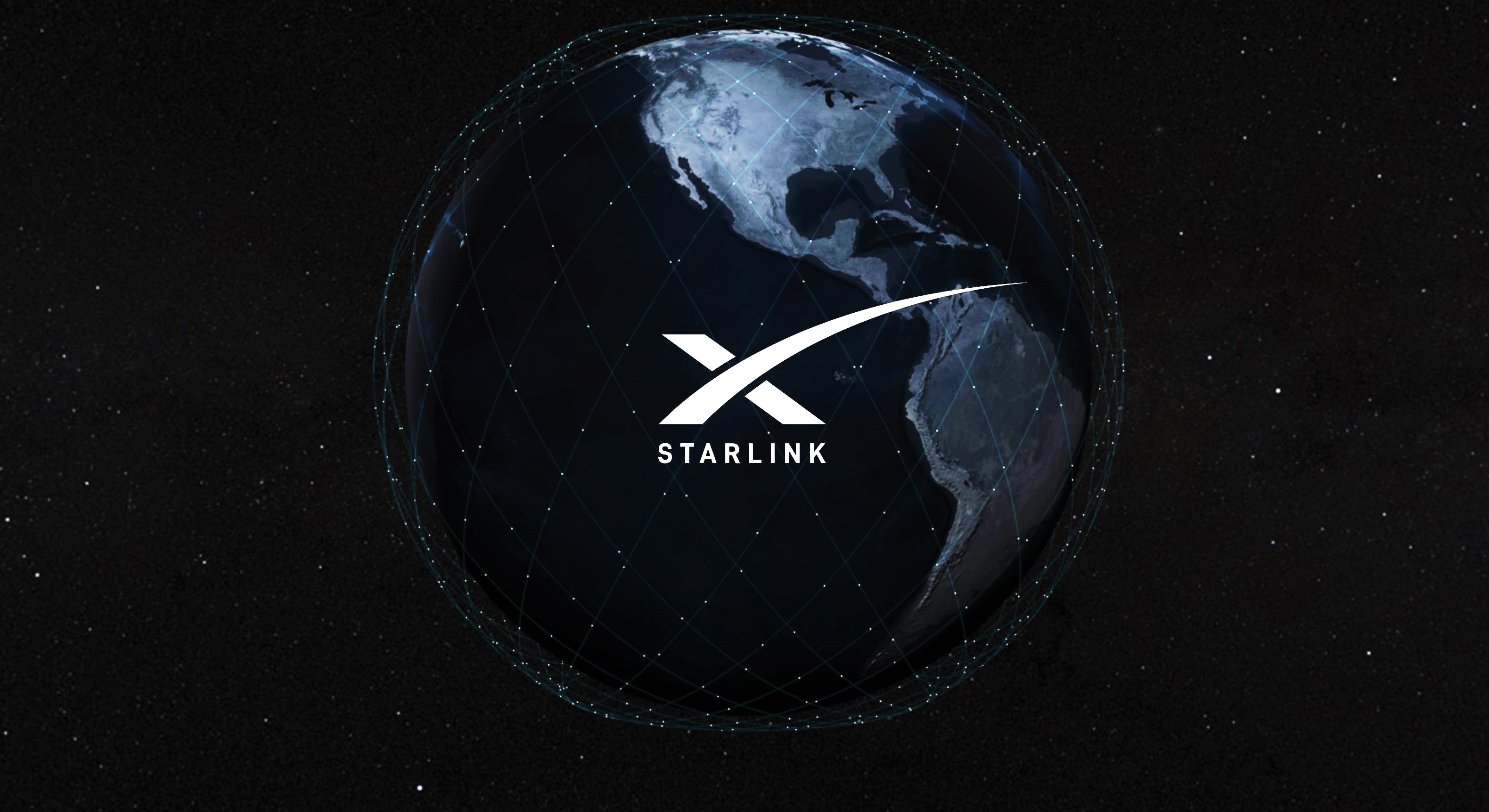

News
SpaceX CEO Elon Musk hints at Starlink’s global reach at Tesla shareholder event
Speaking at Tesla’s annual shareholder meeting, CEO Elon Musk – also CEO of SpaceX – briefly segued to his spaceflight company’s ambitious Starlink program and discussed how he believes the satellite constellation can support no more than 3-5% of the global population.
On May 23rd, SpaceX successfully launched 60 “v0.9” Starlink satellites – weighing as much as 18.5 tons (~41,000 lb) – into LEO, a first step unmatched in ambition in the history of commercial satellites. Delivered to an orbit of ~450 km (280 mi), all but four of the 60 spacecraft have managed to successfully power up their electric ion thrusters and 55 have already raised their orbits to ~500 km (310 mi). For what is effectively a technology/partial-prototype demonstration mission, the record of Starlink v0.9 performance is extremely impressive and bodes well for a quick and relatively easy design optimization (to “v1.0”) before true mass production can begin.
In general, Musk was more than willing to acknowledge some of the potential limitations of a Low Earth Orbit (LEO) broadband satellite constellation at Tesla’s 2019 shareholder meeting. Most notably, he bluntly noted that Starlink is not designed to service densely populated areas and will predominately be focused on low to medium-density populaces. Triggered by an investor’s question about the possibility of integrating Starlink into future Tesla cars, Musk reiterated that SpaceX’s first-generation Starlink user terminals (i.e. ground antennas) will be roughly the size of a “medium pizza”.
Although pizza sizing is not exactly ISO-certified, Starlink’s user antennas will presumably be around 12-14 inches (30-36 cm) wide and come in a square form factor. Thanks to the use of what Musk believes are the most advanced phased array antennas in the world, neither the antennas on Starlink satellites or user terminals will need to physically move to maintain a strong signal. Still, as Musk notes, an antenna the size of medium pizza box would still stick out like a sore thumb on the typically all-glass roof of an of Tesla’s consumer cars, although built-in Starlink antennas might actually make sense on Tesla Semis.
Elon Musk’s specific comment indicated that Starlink – at least in its current iteration – was never meant to serve more than “3-5%” of Earth (population: ~7.8 billion), with most or all of its users nominally located in areas with low to medium population densities. This generally confirms technical suspicions that Starlink (and other constellations like OneWeb and Telesat) is not really capable of providing internet to everyone per se.
For SpaceX, each Starlink satellite – per official statements that the first 60 satellites represent more than 1 terabit of bandwidth – likely offers bandwidth of roughly 17-20 gigabits per second. In simpler terms, this means that one Starlink satellite overhead could theoretically support as many as 4000 users simultaneously streaming YouTube videos at 1080p/30fps, a figure that sounds impressive but glosses over the sheer number of people that live in cities. Importantly, every single Starlink satellite at ~550 km will likely have a service radius of several thousand – if not tens of thousands of – square kilometers.

Even though the US is exceptionally large and spread out relative to most other countries, a single square kilometer of New York City, Los Angeles, San Francisco, Boston, Miami, Seattle, or dozens of other cities could effortlessly saturate a Starlink satellite’s bandwidth. Even the smallest of towns and cities could easily use most or all of ~20 Gbps at peak hours. In short, Starlink is going to be extremely bandwidth-constrained. Even if SpaceX can double or triple each satellite’s bandwidth and have 10-100 satellites overhead and capable of delivering internet at any given moment, it’s hard to imagine that Starlink will ever be able to serve every person that falls under its coverage area.
Additionally, this means that there is a strong chance that Starlink internet customers will be subject to relatively strict bandwidth limitations and throttling at peak hours. Thankfully, these limitations will be made entirely out of technical necessity, standing in stark contrast to the arbitrary, greed-motivated carriers and ISPs Americans are almost universally accustomed to. In an absolute worst-case scenario, Starlink’s already-connected US customers would get roughly the same quality of service they are used to at roughly the same price. However, they would be able to rest assured that their money was going to SpaceX instead of filling the pockets of the robber-baron-esque shareholders and executives that run American ISPs.

Ultimately, the estimates provided above are exceptionally conservative and generally assume worst-case scenarios. SpaceX could very well beat expectations and develop unique and innovative ways of efficiently using its available bandwidth, while also tirelessly working to improve its technology and expand the carrying capacity of newer satellites. In general, CEO Elon Musk’s comments serve as an excellent temper to the hype surrounding Starlink. SpaceX isn’t going to initially be breaking the backs of Comcast or Time Warner but there’s no reason to believe that that day will never come.
Check out Teslarati’s Marketplace! We offer Tesla accessories, including for the Tesla Cybertruck and Tesla Model 3.
Elon Musk
Tesla investors will be shocked by Jim Cramer’s latest assessment
Jim Cramer is now speaking positively about Tesla, especially in terms of its Robotaxi performance and its perception as a company.
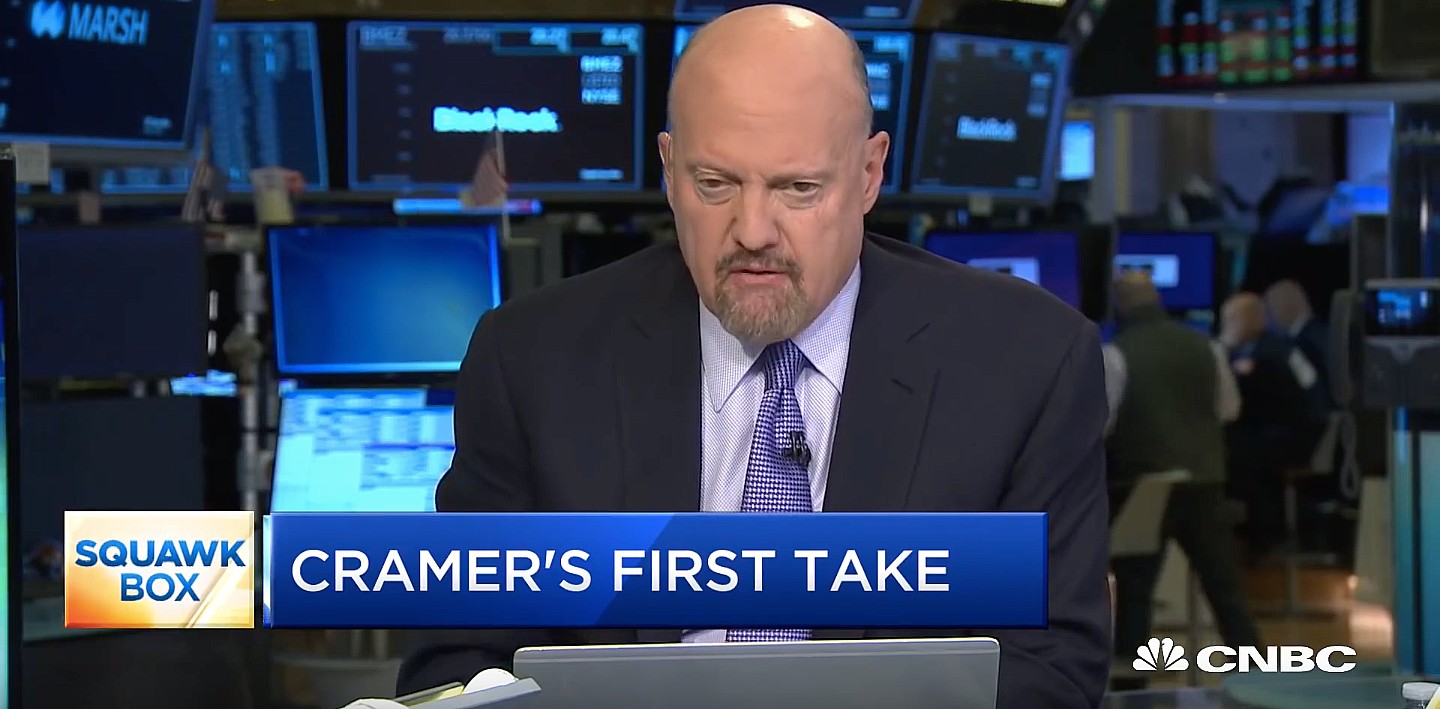
Tesla investors will be shocked by analyst Jim Cramer’s latest assessment of the company.
When it comes to Tesla analysts, many of them are consistent. The bulls usually stay the bulls, and the bears usually stay the bears. The notable analysts on each side are Dan Ives and Adam Jonas for the bulls, and Gordon Johnson for the bears.
Jim Cramer is one analyst who does not necessarily fit this mold. Cramer, who hosts CNBC’s Mad Money, has switched his opinion on Tesla stock (NASDAQ: TSLA) many times.
He has been bullish, like he was when he said the stock was a “sleeping giant” two years ago, and he has been bearish, like he was when he said there was “nothing magnificent” about the company just a few months ago.
Now, he is back to being a bull.
Cramer’s comments were related to two key points: how NVIDIA CEO Jensen Huang describes Tesla after working closely with the Company through their transactions, and how it is not a car company, as well as the recent launch of the Robotaxi fleet.
Jensen Huang’s Tesla Narrative
Cramer says that the narrative on quarterly and annual deliveries is overblown, and those who continue to worry about Tesla’s performance on that metric are misled.
“It’s not a car company,” he said.
He went on to say that people like Huang speak highly of Tesla, and that should be enough to deter any true skepticism:
“I believe what Musk says cause Musk is working with Jensen and Jensen’s telling me what’s happening on the other side is pretty amazing.”
Tesla self-driving development gets huge compliment from NVIDIA CEO
Robotaxi Launch
Many media outlets are being extremely negative regarding the early rollout of Tesla’s Robotaxi platform in Austin, Texas.
There have been a handful of small issues, but nothing significant. Cramer says that humans make mistakes in vehicles too, yet, when Tesla’s test phase of the Robotaxi does it, it’s front page news and needs to be magnified.
He said:
“Look, I mean, drivers make mistakes all the time. Why should we hold Tesla to a standard where there can be no mistakes?”
It’s refreshing to hear Cramer speak logically about the Robotaxi fleet, as Tesla has taken every measure to ensure there are no mishaps. There are safety monitors in the passenger seat, and the area of travel is limited, confined to a small number of people.
Tesla is still improving and hopes to remove teleoperators and safety monitors slowly, as CEO Elon Musk said more freedom could be granted within one or two months.
News
Tesla launches ultra-fast V4 Superchargers in China for the first time
Tesla has V4 Superchargers rolling out in China for the first time.
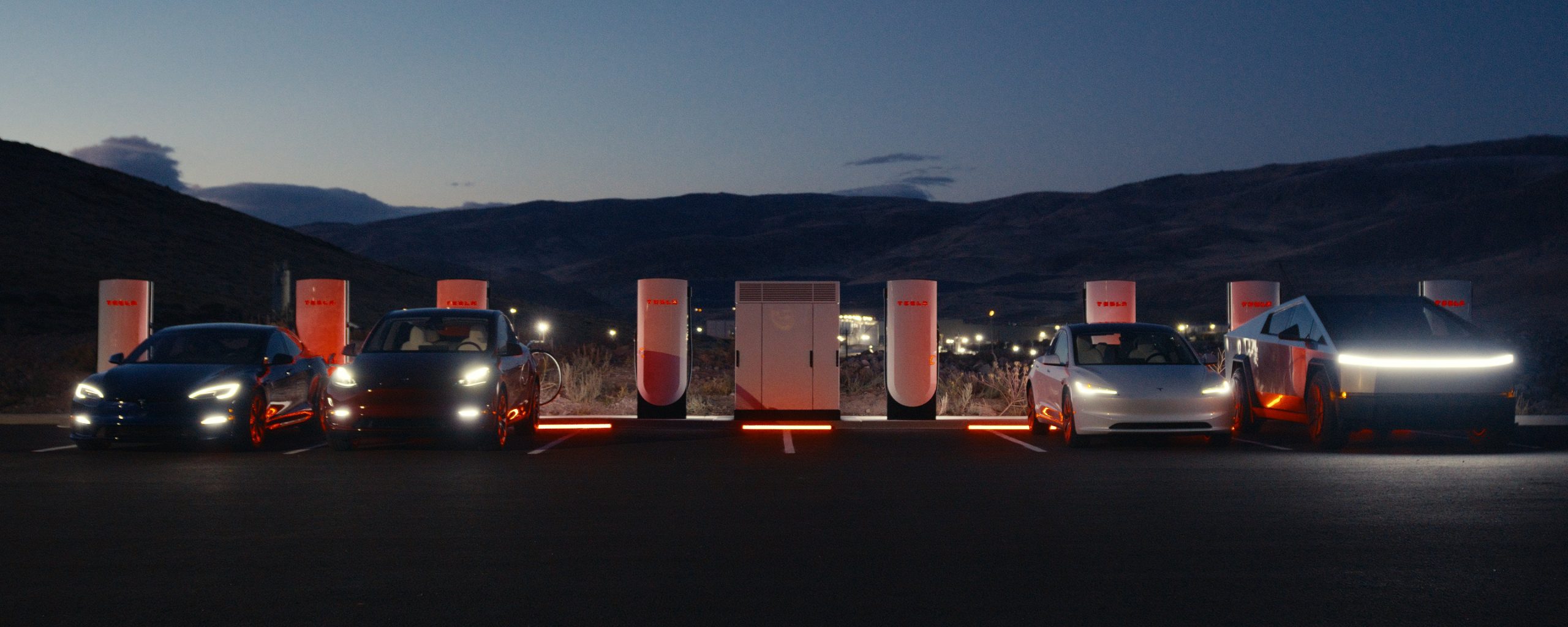
Tesla already has nearly 12,000 Supercharger piles across mainland China. However, the company just initiated the rollout of the ultra-fast V4 Superchargers in China for the first time, bringing its quick-charging piles to the country for the first time since their launch last year.
The first batch of V4 Superchargers is now officially up and running in China, the company announced in a post on Chinese social media outlet Weibo today.
The company said in the post:
“The first batch of Tesla V4 Superchargers are online. Covering more service areas, high-speed charging is more convenient, and six-layer powerful protection such as rain and waterproof makes charging very safe. Simultaneously open to non-Tesla vehicles, and other brands of vehicles can also be charged. There are more than 70,000 Tesla Superchargers worldwide. The charging network layout covers 100% of the provincial capitals and municipalities in mainland China. More V4 Superchargers will be put into use across the country. Optimize the charging experience and improve energy replenishment efficiency. Tesla will accompany you to the mountains, rivers, lakes, and seas with pure electricity!”
The first V4 Superchargers Tesla installed in China are available in four cities across the country: Shanghai, Zhejiang, Gansu, and Chongqing.
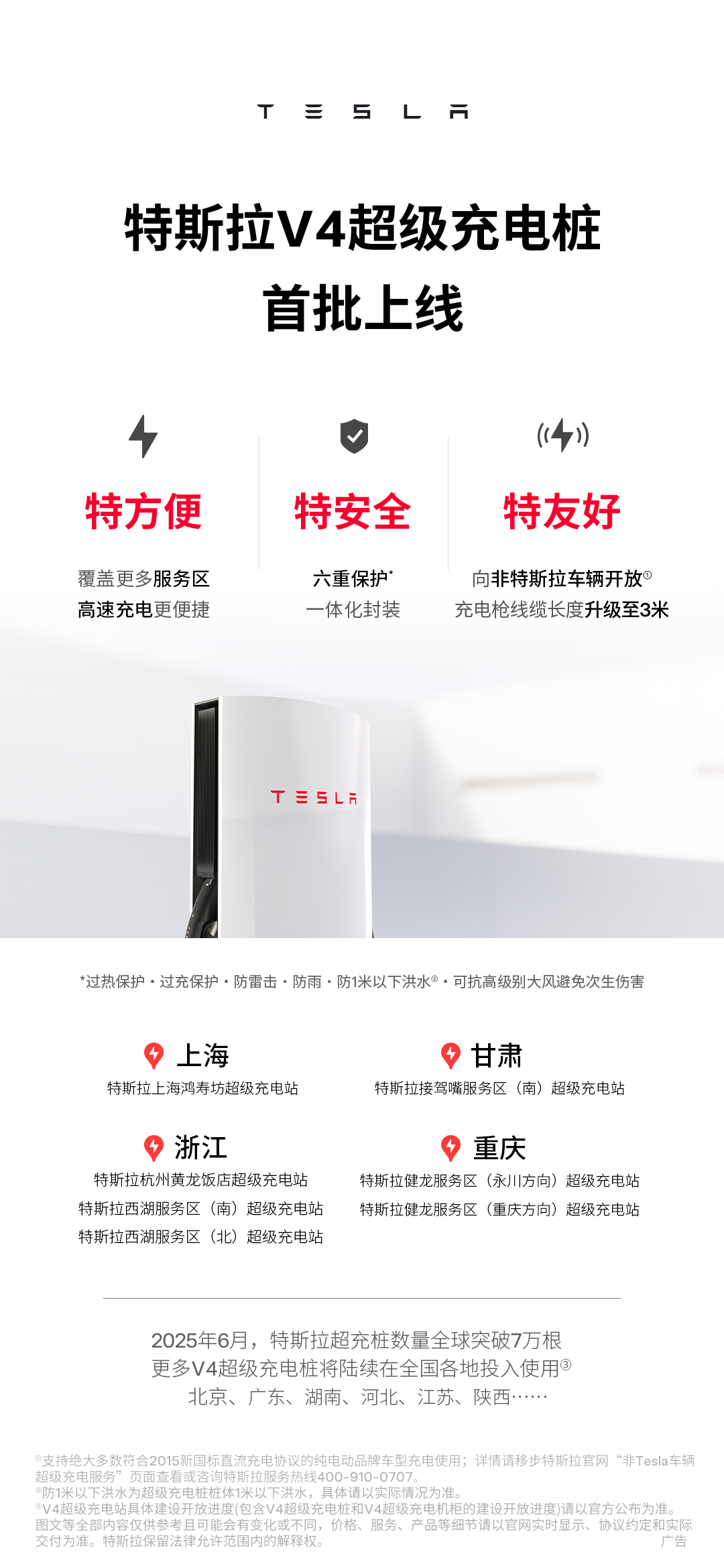
Credit: Tesla China
Tesla has over 70,000 Superchargers worldwide. It is the most expansive and robust EV charging network in the world. It’s the main reason why so many companies have chosen to adopt Tesla’s charging connector in North America and Europe.
In China, some EVs can use Tesla Superchargers as well.
The V4 Supercharger is capable of charging vehicles at speeds of up to 325kW for vehicles in North America. This equates to over 1,000 miles per hour of charging.
Elon Musk
Elon Musk hints at when Tesla could reduce Safety Monitors from Robotaxi
Tesla could be reducing Safety Monitors from Robotaxi within ‘a month or two,’ CEO Elon Musk says.
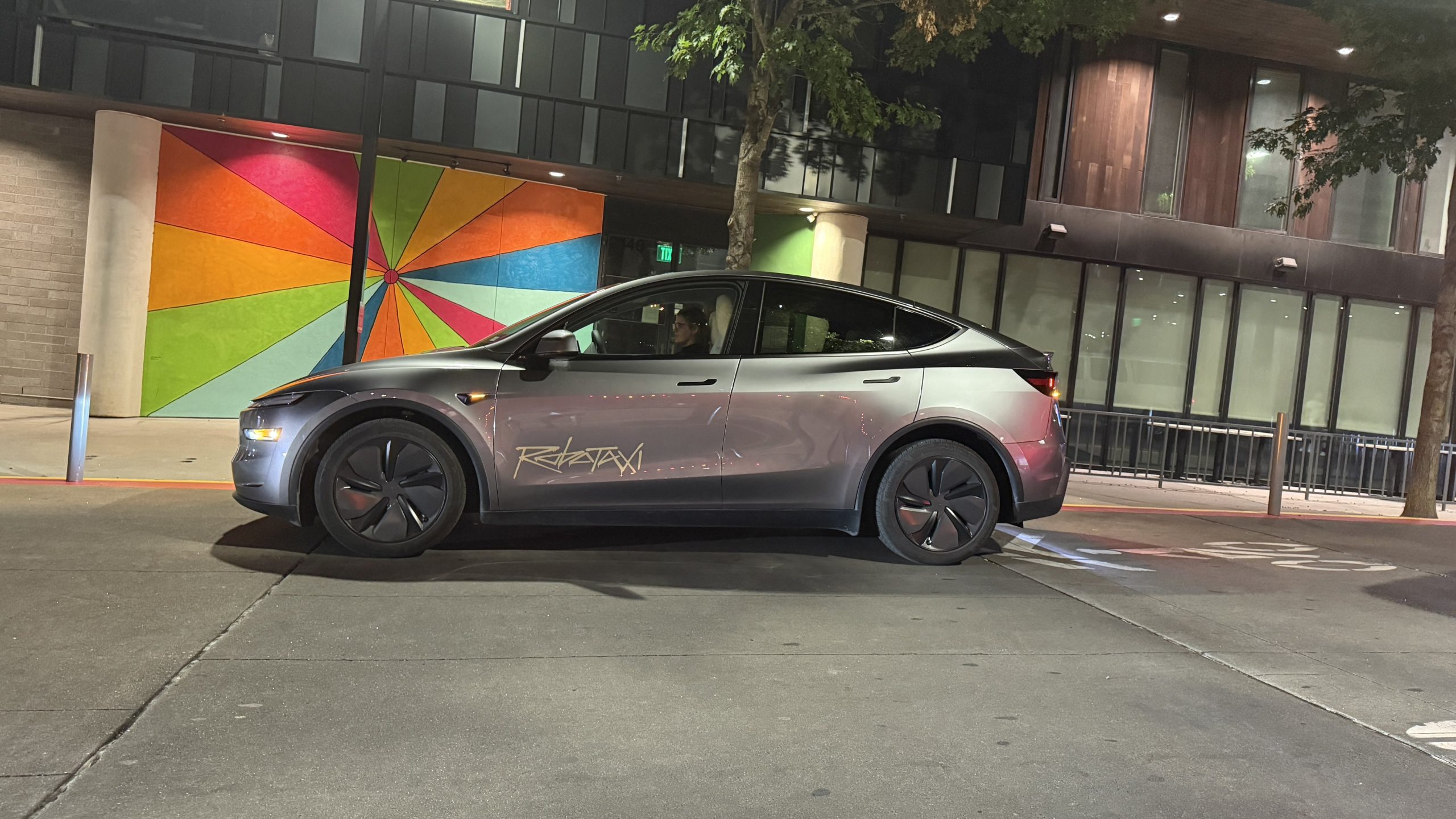
Elon Musk hinted at when Tesla could begin reducing Safety Monitors from its Robotaxis. Safety Monitors are Tesla employees who sit in the front passenger seat during the driverless rides, and are there to ensure safety for occupants during the earliest rides.
Tesla launched its Robotaxi fleet in Austin last Sunday, and after eight days, videos and reviews from those who have ridden in the driverless vehicles have shown that the suite is safe, accurate, and well coordinated. However, there have been a few hiccups, but nothing that has put anyone’s safety in danger.
A vast majority — close to all of the rides — at least according to those who have ridden in the Robotaxi, have been performed without any real need for human intervention. We reported on what was the first intervention last week, as a Safety Monitor had to step in and stop the vehicle in a strange interaction with a UPS truck.
Watch the first true Tesla Robotaxi intervention by safety monitor
The Tesla and UPS delivery truck were going for the same street parking space, and the Tesla began to turn into it. The UPS driver parallel parked into the spot, which was much smaller than his truck. It seemed to be more of an instance of human error instead of the Robotaxi making the wrong move. This is something that the driverless cars will have to deal with because humans are aggressive and sometimes make moves they should not.
The Safety Monitors have not been too active in the vehicles. After all, we’ve only seen that single instance of an intervention. There was also an issue with the sun, when the Tesla braked abnormally due to the glare, but this was an instance where the car handled the scenario and proceeded normally.
With the Robotaxi fleet operating impressively, some are wondering when Tesla will begin scaling back both the Safety Monitors and Teleoperators that it is using to ensure safety with these early rides.
CEO Elon Musk answered the inquiry by stating, “As soon as we feel it is safe to do so. Probably within a month or two.”
As soon as we feel it is safe to do so.
Probably within a month or two. We continue to improve the Tesla AI with each mile driven.
— Elon Musk (@elonmusk) June 30, 2025
Musk’s response seems to confirm that there will be fewer Teleoperators and Safety Monitors in the coming months, but there will still be some within the fleet to ensure safety. Eventually, that number will get to zero.
Reaching a point where Tesla’s Robotaxi is driverless will be another significant milestone for the company and its path to fully autonomous ride-sharing.
Eventually, Tesla will roll out these capabilities to consumer-owned vehicles, offering them a path to generate revenue as their car operates autonomously and completes rides.
For now, Tesla is focusing on perfecting the area of Austin where it is currently offering driverless rides for just $4.20 to a small group of people.
-

 News5 days ago
News5 days agoTesla Robotaxi’s biggest challenge seems to be this one thing
-

 News2 weeks ago
News2 weeks agoTesla confirms massive hardware change for autonomy improvement
-

 Elon Musk2 weeks ago
Elon Musk2 weeks agoElon Musk slams Bloomberg’s shocking xAI cash burn claims
-

 News2 weeks ago
News2 weeks agoTesla China roars back with highest vehicle registrations this Q2 so far
-

 News2 weeks ago
News2 weeks agoTesla features used to flunk 16-year-old’s driver license test
-

 News2 weeks ago
News2 weeks agoTexas lawmakers urge Tesla to delay Austin robotaxi launch to September
-

 News2 weeks ago
News2 weeks agoTesla dominates Cars.com’s Made in America Index with clean sweep
-

 News2 weeks ago
News2 weeks agoTesla’s Grok integration will be more realistic with this cool feature





















